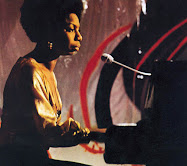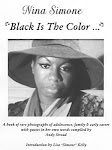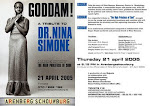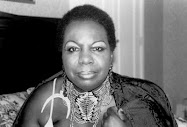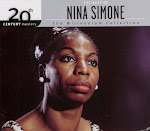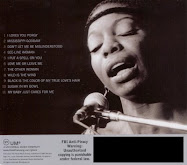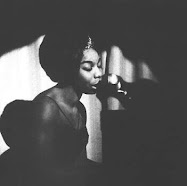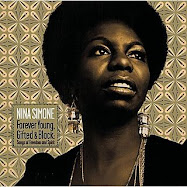Miles Davis - The Man
For nearly six decades, Miles Davis has embodied all that is cool – in his music (and most especially jazz), in his art, fashion, romance, and in his international, if not intergalactic, presence that looms strong as ever today. 2006 – The year in which Miles Davis was inducted into the Rock And Roll Hall Of Fame on March 13th – is a landmark year, commemorating the 80th anniversary of his birth on May 26, 1926, and the 15th anniversary of his death on September 28, 1991. In between those two markers is more than a half-century of brilliance – often exasperating, brutally honest with himself and to others, uncompromising in a way that transcended mere intuition.Miles Davis The Miles Davis Story
Miles Davis: Walkin'
There's an eternal battle nearly every underground artist fights. In theory, achieving mainstream cultural acceptance and ubiquity for the art you create without having to change a note of it should be a major victory. But the taste is often bittersweet. You can't help but wonder what you've lost in becoming successful. Think of that little emocore trio from Seattle who's second album went on to become one of the most significant albums (and best selling) of all time despite being every bit as abrasive and-let's say-grungy as their first. But no originally revolutionary musical movement has gone so completely from the home of rebels to the toast of high society as the “Great American Art Form” known as jazz.
Jazz was originally the respite of absurdly talented musicians not welcomed by the white establishment in traditional orchestras. By the mid-60's the variant of jazz which emphasized small combos and long solos known as bebop wasn't just accepted by the establishment. It was the establishment. Codified in the “Real Book” and the “Fake Book;” two enormous volumes of simplified sheet music for the entire collection of traditionally accepted jazz standards. What in classical music and traditional theatre they call “the Canon.”
I often wonder what the heroin addicted rebel genius Charlie Parker would have thought had he lived long enough to see doctorate programs in jazz composition and performance and major universities, with his own music held up as the golden ideal. Though Parker may have lived fast and died young, one of his frequent collaborators, and another of the great innovators of bebop, Miles Davis survived to see his cultural victory was a Pyrrhic one. Witnessing the utter co-option of his art form at the hands of the mainstream Davis drew a line in the sand in 1970 when he released the landmark Bitches Brew.
He had been moving away from bop at that point for a decade at least, but his previous recordings (even the heavily electric In A Silent Way from 1969) still maintained a tenuous connection to the past. In A Silent Way, despite it's electric and free jazz leanings even borrowed the Sonata Form from classical music. Bitches Brew was a complete break from all this. It was an ugly, confrontational, emotionally brutal, noisy mess of an album.
Miles Dewey Davis III (May 26, 1926 – September 28, 1991) was an American jazz musician, trumpeter, bandleader, and composer. Widely considered one of the most influential musicians of the 20th century, Miles Davis was, with his musical groups, at the forefront of several major developments in jazz music, including bebop, cool jazz, hard bop, modal jazz, and jazz fusion.
On October 7, 2008, his 1959 album Kind of Blue received its fourth platinum certification from the Recording Industry Association of America (RIAA), for shipments of at least four million copies in the United States. Miles Davis was inducted into the Rock and Roll Hall of Fame in 2006.
Davis was noted as "one of the key figures in the history of jazz". On December 15, 2009, the U.S. House of Representatives passed a symbolic resolution recognizing and commemorating the album Kind of Blue on its 50th anniversary, "honoring the masterpiece and reaffirming jazz as a national treasure.
Miles Dewey Davis was born on May 26, 1926, to an affluent African American family in Alton, Illinois. His father, Miles Henry Davis, was a dentist. In 1927 the family moved to East St. Louis, Illinois. They also owned a substantial ranch in northern Arkansas, where Davis learned to ride horses as a boy.
Davis' mother, Cleota Mae (Henry) Davis, wanted her son to learn the piano; she was a capable blues pianist but kept this fact hidden from her son. His musical studies began at 13, when his father gave him a trumpet and arranged lessons with local musician Elwood Buchanan. Davis later suggested that his father's instrument choice was made largely to irk his wife, who disliked the trumpet's sound. Against the fashion of the time, Buchanan stressed the importance of playing without vibrato; he was reported to have slapped Davis' knuckles every time he started using heavy vibrato. Davis would carry his clear signature tone throughout his career. He once remarked on its importance to him, saying, "I prefer a round sound with no attitude in it, like a round voice with not too much tremolo and not too much bass. Just right in the middle. If I can’t get that sound I can’t play anything."
In the fall of 1944, following graduation from high school, Davis moved to New York City to study at the Juilliard School of Music.
Upon arriving in New York, he spent most of his first weeks in town trying to get in contact with Charlie Parker, despite being advised against doing so by several people he met during his quest, including saxophonist Coleman Hawkins.
Finally locating his idol, Davis became one of the cadre of musicians who held nightly jam sessions at two of Harlem's nightclubs, Minton's Playhouse and Monroe's. The group included many of the future leaders of the bebop revolution: young players such as Fats Navarro, Freddie Webster, and J. J. Johnson. Established musicians including Thelonious Monk and Kenny Clarke were also regular participants.
Davis dropped out of Juilliard, after asking permission from his father. In his autobiography, Davis criticized the Juilliard classes for centering too much on the classical European and "white" repertoire. However, he also acknowledged that, while greatly improving his trumpet playing technique, Juilliard helped give him a grounding in music theory that would prove valuable in later years.
Davis began playing professionally, performing in several 52nd Street clubs with Coleman Hawkins and Eddie "Lockjaw" Davis. In 1945, he entered a recording studio for the first time, as a member of Herbie Fields's group. This was the first of many recordings to which Davis contributed in this period, mostly as a sideman. He finally got the chance to record as a leader in 1946, with an occasional group called the Miles Davis Sextet plus Earl Coleman and Ann Hathaway—one of the rare occasions when Davis, by then a member of the groundbreaking Charlie Parker Quintet, can be heard accompanying singers. In these early years, recording sessions where Davis was the leader were the exception rather than the rule; his next date as leader would not come until 1947.
Around 1945, Dizzy Gillespie parted ways with Parker, and Davis was hired as Gillespie's replacement in his quintet, which also featured Max Roach on drums, Al Haig (replaced later by Sir Charles Thompson and Duke Jordan) on piano, and Curley Russell (later replaced by Tommy Potter and Leonard Gaskin) on bbass.
Despite all the personal turmoil, the 1950–54 period was actually quite fruitful for Davis artistically. He made quite a number of recordings and had several collaborations with other important musicians. He got to know the music of Chicago pianist Ahmad Jamal, whose elegant approach and use of space influenced him deeply. He also definitively severed his stylistic ties with bebop.
In 1951, Davis met Bob Weinstock, the owner of Prestige Records, and signed a contract with the label. Between 1951 and 1954, he released many records on Prestige, with several different combos. While the personnel of the recordings varied, the lineup often featured Sonny Rollins and Art Blakey. Davis was particularly fond of Rollins and tried several times, in the years that preceded his meeting with John Coltrane, to recruit him for a regular group. He never succeeded, however, mostly because Rollins was prone to make himself unavailable for months at a time. In spite of the casual occasions that generated these recordings, their quality is almost always quite high, and they document the evolution of Davis' style and sound. During this time he began using the Harmon mute, held close to the microphone, in a way that grew to be his signature, and his phrasing, especially in ballads, became spacious, melodic, and relaxed. This sound was to become so characteristic that the use of the Harmon mute by any jazz trumpet player since immediately conjures up Miles Davis.
Miles Davis - Flamenco Sketches
From the 'Kind of Blue' sessions, the finest jazz sessions in the history of jazz. Probably the most influential sessions also. All of this is one take and pure improvisation. This is the take that went on the album, there are others. Bill Evan's sense of composition, melody, and modal progression are on full display in this song. He was the one who composed it, then they all made magic in the studio. Miles Davis' crowning achievement was putting these guys and these songs together.
Miles Davis & Gil Evans 1959
In 1958, Davis and Evans were back in the studio to record Porgy and Bess, an arrangement of pieces from George Gershwin's opera of the same name. The lineup included three members of the sextet: Paul Chambers, Philly Joe Jones, and Julian "Cannonball" Adderley. Davis called the album one of his favorites.
Sketches of Spain (1959–1960) featured songs by contemporary Spanish composer Joaquin Rodrigo and also Manuel de Falla, as well as Gil Evans originals with a Spanish flavor. Miles Davis at Carnegie Hall (1961) includes Rodrigo's Concierto de Aranjuez, along with other compositions recorded in concert with an orchestra under Evans' direction.
Gil Evans Miles Davis Sketches of Spain
Miles Davis In 1959 "Kind Of Blue"
Miles Davis - Around The Midnight (1967)
Miles Davis - Tutu. Live in Stuttgart 1988.
Miles-Davis Montreux 1986
Miles Davis - Tutu (Full Album)





.jpg)































